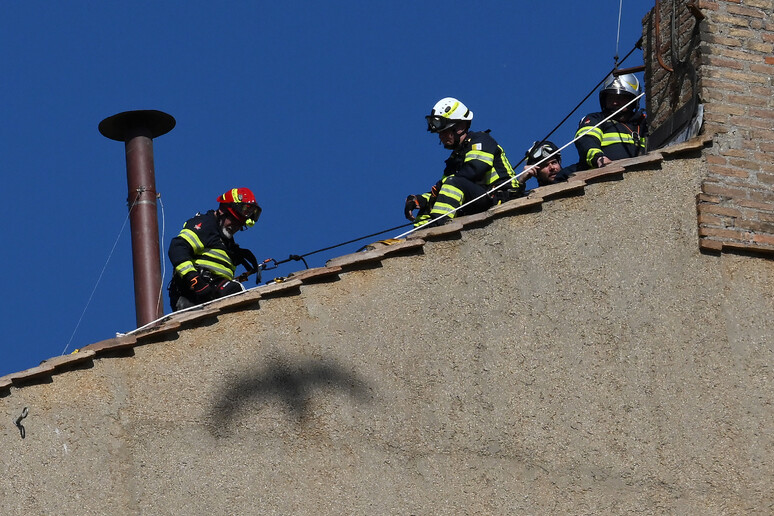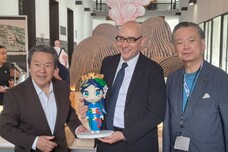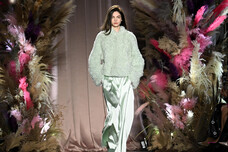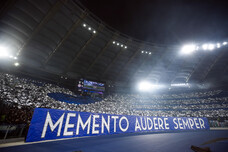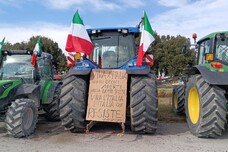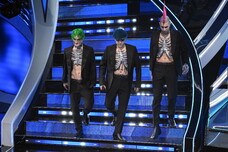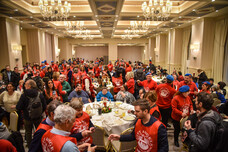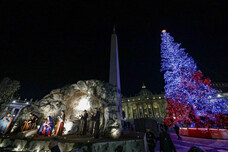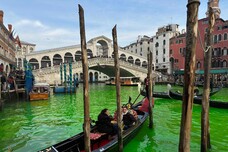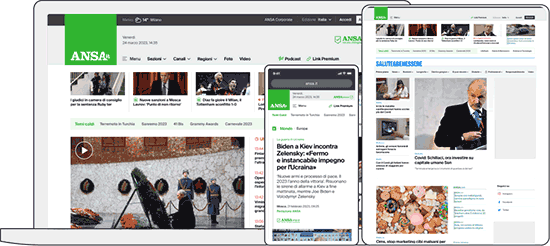The chimney that billows smoke during
elections for a new pope was installed on the roof the Sistine
Chapel Friday ahead of the conclave of cardinals that begins
next Wednesday to pick a successor to late Pope Francis.
Tests were then carried out to make sure that it is working
properly, the Vatican said.
The chimney was connected to two stoves, one older and made of
cast iron and one more modern.
The first is from 1939 and will be used to burn the ballots; the
second is more recent, from 2005, and will be used instead to
burn the additives that will produce the black color in the
event of non-election and the iconic white smoke when the new
Roman pontiff is elected.
The white smoke will also be accompanied by the ringing of St
Peter's bells.
Cardinals meanwhile continued their confabulations to prepare to
elect Francis's successor.
Salvadorian Cardinal Gregorio Rosa Chavez has said he did not
expect the conclave to be long.
"We don't have a name or the style, but I think the direction is
clear," said Rosa Chavez, who is not among the 133 cardinal
electors set to take part in the conclave because he is over 80.
A three-thirds majority or 89 cardinals is needed to elect the
267th leader of the world's 1.4 billion Catholics after Francis
died of a stroke following pneumonia at the age of 88 on Easter
Monday.
"I think it (the conclave) will last three days at most. "It's
very open and there could be surprises, as there always have
been in the history of the Church."
Vatican Secretary of State Pietro Parolin and Filipino Luis
Antonio Tagle are leading the running among papabili for London
bookies at the moment.
A video of Tagle singing John Lennon's Imagine has gone viral.
Recent conclaves have been fairly short, a matter of days.
Francis's predecessor Benedict XVI was elected after two days in
2005, while it took the cardinals just 28 hours to pick Francis
in 2013.
The names of the 'papabili', or likely papal candidates, have
been circulating in the media for some time amid Pope Francis's
last illness and amid a geography of the conclave of cardinal
electors that he radically changed during his 12-year
pontificate, opening it up to newer and faster-growing zones of
Catholic worship.
The other top papabili at the moment reportedly include:
Archbishop of Bologna and Italian bishops conference (CEI)
president Matteo Zuppi (also Ukraine envoy), the Patriarch of
Jerusalem Pierbattista Pizzaballa, Hungarian Peter Erdo,
Portugal's Jose Tolentino, France's Jean-Marc Aveline, Dutchman
Willem J. Eijk, the Congolese Fridolin Ambongo Besungu to embody
the booming African reality, along with fellow Africans Peter
Turkson and Robert Sarah, and Brazilian Leonardo Ulrich Steiner,
Archbishop of Manaus, for the equally increasing Latin American
zone of interest, which boasted its first pontiff in the
Argentine Francis.
Some bookies do not even exclude two people over eighty who will
not participate in the conclave but are still eligible on paper,
such as the Italian Angelo Scola, former archbishop of Milan,
and the Canadian Marc Ouellet.
Meanwhile, the British tabloid Daily Mail has questioned
artificial intelligence on who will be the new pope and in this
case too, the result was Cardinal Parolin, Secretary of State of
the Holy See.
Of the 133 cardinals who will take part in the conclave, 108
were named by Francis, 22 by his German predecessor Benedict and
five by the previous Polish pope, John Paul II.
One of those named by Francis was one of his fiercest critics,
Germany's Gerhard Ludwig Mueller. Other opponents of Francis's
more liberal attitudes include several African bishops where
even talking about homosexuality is taboo, and a swathe of
conservative American cardinals.
The college of cardinals under Francis became ever less
Eurocentric, ever less Italian and Western led, showing a more
generous gaze on the peripheral realities of the Church, the
'frontier churches' across the globe.
Some 59 cardinals come from Europe (19 from Italy), 37 from the
Americas (16 from North America, four from Central America, 17
from South America), 20 cardinals from Asia, 16 from Africa, and
three from Oceania.
The youngest member of the conclave will be the Ukrainian Mykola
Byčok, who turned 45 on February 13.
The oldest is the Spaniard Carlos Osoro Sierra, who turns 80 on
May 16 and may thus be disqualified from voting in the unlikely
event of electioneering dragging on, followed by only a month by
the Guinean Sarah.
ALL RIGHTS RESERVED © Copyright ANSA
